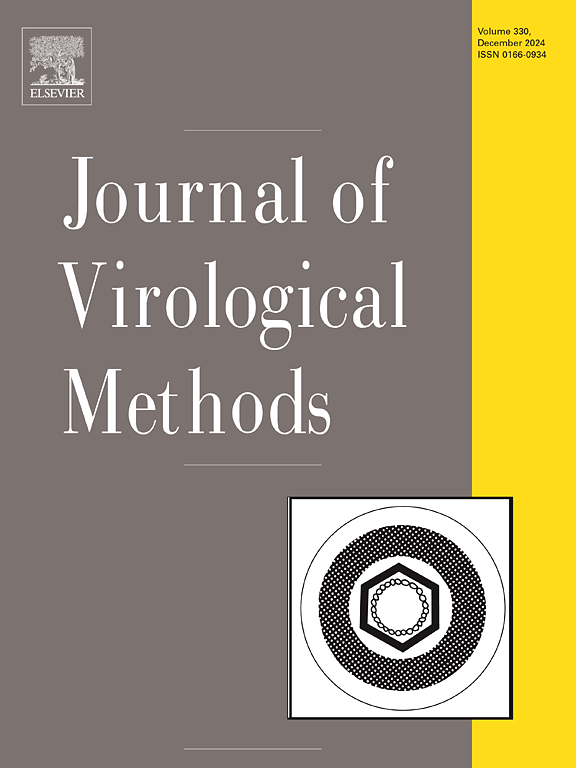Comparison of EBOV GP IgG antibody reactivity: Results from two immunoassays in the Democratic Republic of the Congo
IF 1.6
4区 医学
Q3 BIOCHEMICAL RESEARCH METHODS
引用次数: 0
Abstract
Ebola virus (EBOV) is a highly infectious pathogen, and its long-term consequences continue to be investigated. With its high fatality rate and potential for reinfection or latent infection, continued development of research tools is of utmost importance. Using a cohort (n = 503) of existing bio-banked specimens from the Democratic Republic of the Congo (DRC) two EBOV glycoprotein (GP) immunoglobulin G (IgG) antibody-detection assays were compared: the gold-standard Filovirus Animal Non-Clinical Group (FANG) and a Multiplex bead-based Immunoassay (MIA) with seven pan-filoviral targets. As not all immunoassays have been shown to detect a vaccine-induced immune response, and previous EBOV serosurveillance has been primarily conducted with singleplex technology, this MIA was assessed as an additional resource. Among the cohort, as sample seroreactivity increased, assay correlation increased (r2=0.80). Correlation was sustained among sub-populations of the cohort—in detecting natural immunity among survivors and vaccine-derived responses. Additionally, when results were binarized by seroreactivity, there was high correlation between the two assays (kappa=0.70) with 71 serodiscordant samples. These data indicate that the MIA is an apt alternative to the singleplex FANG assay in detecting relative seroreactivity and can be used as a potential tool for widespread pan-filovirus serosurveillance in the DRC and similar contexts.
刚果民主共和国埃博拉病毒GP IgG抗体反应性的比较:两种免疫测定结果。
埃博拉病毒(EBOV)是一种高度传染性病原体,其长期后果仍在调查中。由于其高致死率和潜在的再感染或潜伏感染,继续开发研究工具至关重要。使用来自刚果民主共和国(DRC)的现有生物库标本队列(n = 503),比较了两种EBOV糖蛋白(GP)免疫球蛋白G (IgG)抗体检测方法:金标准丝状病毒动物非临床组(FANG)和具有7个泛丝状病毒靶点的多重头免疫分析法(MIA)。由于并非所有免疫测定法都能检测出疫苗诱导的免疫反应,而且以前的埃博拉病毒血清监测主要是用单效技术进行的,因此对这一MIA进行了评估,认为它是一种额外的资源。在队列中,随着样本血清反应性的增加,检测相关性增加(r2=0.80)。在检测幸存者自然免疫和疫苗衍生反应的队列亚群中,相关性持续存在。此外,当结果通过血清反应性进行二值化时,有71个血清不一致的样本存在两种检测方法之间的高相关性(kappa=0.70)。这些数据表明,在检测相对血清反应性方面,MIA是一种合适的替代单组分FANG测定法,可作为在刚果民主共和国和类似情况下广泛进行泛丝状病毒血清监测的潜在工具。
本文章由计算机程序翻译,如有差异,请以英文原文为准。
求助全文
约1分钟内获得全文
求助全文
来源期刊
CiteScore
5.80
自引率
0.00%
发文量
209
审稿时长
41 days
期刊介绍:
The Journal of Virological Methods focuses on original, high quality research papers that describe novel and comprehensively tested methods which enhance human, animal, plant, bacterial or environmental virology and prions research and discovery.
The methods may include, but not limited to, the study of:
Viral components and morphology-
Virus isolation, propagation and development of viral vectors-
Viral pathogenesis, oncogenesis, vaccines and antivirals-
Virus replication, host-pathogen interactions and responses-
Virus transmission, prevention, control and treatment-
Viral metagenomics and virome-
Virus ecology, adaption and evolution-
Applied virology such as nanotechnology-
Viral diagnosis with novelty and comprehensive evaluation.
We seek articles, systematic reviews, meta-analyses and laboratory protocols that include comprehensive technical details with statistical confirmations that provide validations against current best practice, international standards or quality assurance programs and which advance knowledge in virology leading to improved medical, veterinary or agricultural practices and management.

 求助内容:
求助内容: 应助结果提醒方式:
应助结果提醒方式:


